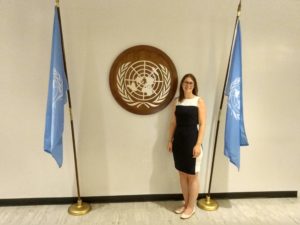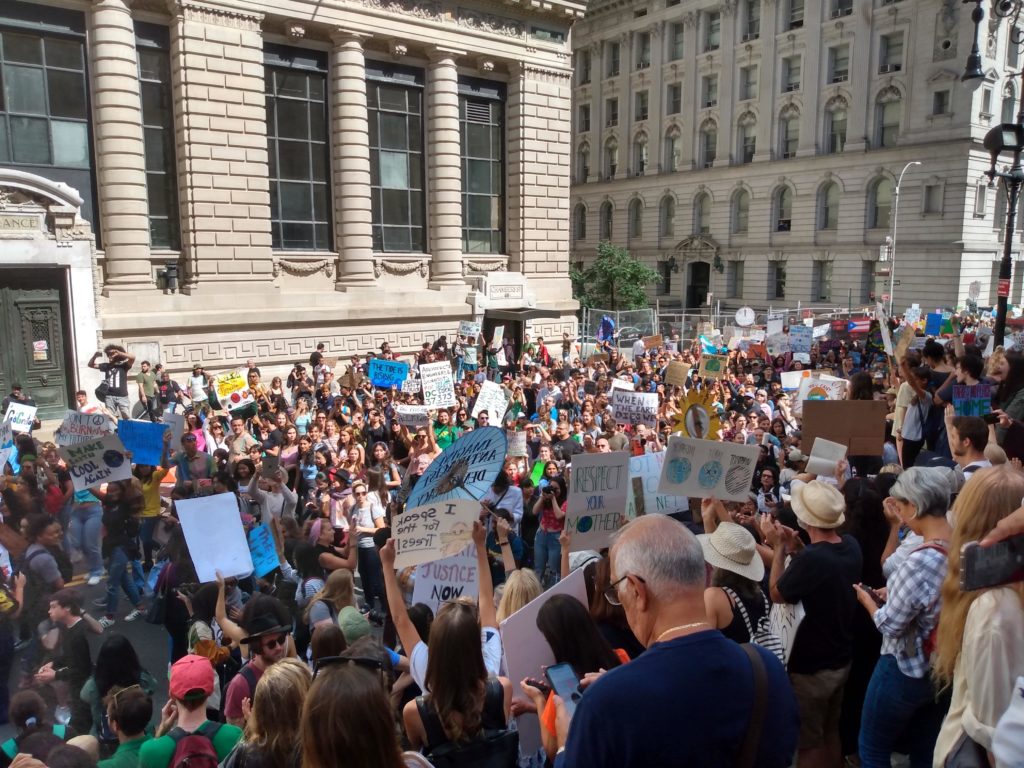SER MWGL Board Member Attends UN Youth Climate Summit
Elena_Embarks for UN Climate Summit in NYC
Elena Stachew, Midwest Great Lakes Chapter member from The University of Akron, attended the 2019 UN Youth Climate Summit on Saturday September 21 at the United Nations in New York City. Elena is a student representative to the Board of Directors of the Midwest Great Lakes Chapter of the Society for Ecological Restoration (SER MWGL).
The Midwest Great Lakes Chapter is a North American regional chapter of the Society for Ecological Restoration (SER) and was founded in 2008. It serves the states of Illinois, Iowa, Indiana, Michigan, Minnesota, Ohio, and Wisconsin.
Elena, was one of 500 young people in the world chosen to attend the first-ever UN Youth Climate Summit. She represented Cleveland, Northeast Ohio and the Midwest-Great Lakes region in the areas of biomimicry, ecological restoration and coastal resilience. Elena applied through Global Shapers Community as a member of the Cleveland Hub. Global Shapers Community is a youth initiative of the World Economic Forum.
Elena At The 2019 Youth Climate Summit
Stachew had the opportunity to participate in conversations on climate finance with the World Bank, meet and connect with young climate action leaders from Kazakhstan, Vanuatu, Romania, The Netherlands, India, Oman and Croatia, and listen to Greta Thunberg, UN Secretary-General Antonio Guterres and many youth-led climate organizations and movements give declarations, announcements, project announcements and speeches demanding for action by our global leaders.
Elena points out that, “many innovative solutions were presented by youth, including data storage in plant DNA and creating the world’s first data forest, to a sustainable fashion and lifestyle app, to platform agnostic weather apps to help small shareholder farmers grow more food more efficiently. We also had the opportunity to ask tough climate action questions the Chief Environmental Officer of Microsoft, the CEO of Google X, the President of the Republic of the Marshall Islands, the Chair of the Elders, the President of Austria and the Governor of the State of Washington, questions that these leaders are still not prepared to answer and effectively act upon.”
Elena also participated with fellow youth in last Friday’s Climate Strike in New York City, starting at Foley Square and ending at Battery Park for an afternoon rally. “The energy and the passion were absolutely contagious”, enthused Stachew.
Stachew described her experience this way:
“The agenda that the United Nations prepared for our Summit was not what inspired me, but listening to the stories and learning from fellow young activists, leaders and change-makers that I met and connected with during our short one day visit. The moments that truly moved me were when we all sang and clapped along with a fellow youth climate activist whom demanded for stronger action and policies to mitigate climate change by our world leaders, in which they did not give us satisfactory answers. When we cheered, hollered and gave loud, disruptive standing ovations to every single youth who had the courage to ask our world leaders tough questions on climate action. When we all cheered when 20+ youth started chanting in solidarity for the 6 activists whose visas were denied. These are the moments that showed youth in solidarity and youth as a force of change at the global stage.”
Restoration Research
Elena is in the PhD program in Integrated Biosciences at University of Akron. She is also a Biomimicry PhD Fellow with Biohabitats and Cleveland Water Alliance in partnership with the Ohio Department of Natural Resources (ODNR’s) Office of Coastal Management. Stachew’s research focus is on biomimetic coastal infrastructure to attenuate waves, reduce erosion and create habitat inspired by root structures.
She describes her work this way: “My integration is ecology into engineering practices as my background is in polymer and materials science engineering. I am interested in how we move engineers toward rapid creation, testing and deployment of sustainable, habitat-creating, climate-resilient, even living infrastructure to protect all our coastlines in the era of climate disruption, but in my particular case, Lake Erie’s coast. I believe to do so that we must look to natural ecosystems first for design inspiration and engineering viability.”
Stachew explains that “My biological models are root structures along streams, rivers and coasts that provide sediment stability, and large woody debris as habitat and as a hydrodynamic force in changing the geomorphology of aquatic environments. The goal is to create biomimetic coastal infrastructure prototypes mimicking the functions of root structures and large woody debris.”
Recommendations for Restoration Ecologists
“My takeaway from the Youth Climate Summit experience is for restoration ecologists is to involve youth as much as you can in every aspect of your projects. Consider a youth advisory board at your companies. Bring in more youth as volunteers for invasive species removal, vegetation and tree planting, and other restoration activities. Demand from your clients that this is a requirement and not an option. Not enough youth are learning about climate change and its impacts in their school curriculum and close to 50% of the world’s population is under 25. Young people are the generation that will feel the greatest disruption from climate change and must be trained by those experienced in the practice of reforestation, rehabilitation and restoration for their future livelihoods and well-being.”
Consider as a first step, by joining youth in signing this declaration for climate action prepared after the UN Youth Climate Summit: bit.ly/SignActionDeclaration
Full 6 page declaration is here: http://bit.ly/globalyouthclimatedeclaration
Follow Elena on Instagram at Elena_Embarks or on LinkedIn at https://www.linkedin.com/in/elena-stachew



